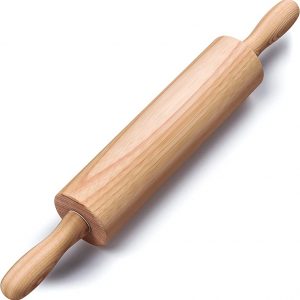Project Report For Rolling Pin
Introduction
Project Report For Rolling Pin is as follows.
A rolling pin is a cylindrical device used in food preparation to shape and flatten dough. Rolling pins are classified into two types: rollers and rods. Roller rolling pins are often thin tapered battens with tiny handles at each end; rod rolling pins are typically large cylinders with small grips at either end.
As they are used for diverse jobs in cooking and baking, rolling pins of various forms and materials provide distinct benefits. Each material has its own unique characteristics and benefits, and the choice of material often depends on the intended use and personal preference of the user.
Rolling pins are an essential tool in the kitchen for rolling out the dough for a variety of baked goods, including bread, pasta, and pastries. The most common material is wood, which is known for its durability and traditional look. Other materials that are used include stainless steel, marble, and plastic.

Uses Of Rolling Pin
- Place the pastry dough on the board after lightly dusting it with flour. Sprinkle on more flour. Apply flour on the rolling pin to stop it from adhering to the dough. Holding the rolling pin in your dominant hand, flatten the dough’s surface by striking it repeatedly.
- Sprinkle additional flour over and beneath the dough. Put a hand on each of the rolling pin’s ends. The pin’s middle should be pressed into the dough’s centre. In one swift motion, push down and roll to the edge. Roll out the dough to the other dough edges and repeat this operation. Roll the dough again, rotating it one more. Always begin in the middle and move outward.
- French rolling pins are lighter than Italian rolling pins, which flatten dough more quickly. Put your hands flat on either end of the pin and bend your fingers to utilize it. Under your palms and across the dough, roll the pin.
- You should use a French rolling pin to shape the dough. In order to secure the pin to the dough, place one flat hand on top of the pin. Roll the pin in a circle with the other hand to give it a fuller, rounder form.
- Roll the dough out again until it is completely flat. Regularly lift and flip the dough, dusting the work surface with additional flour to keep it from sticking or tearing.
Get Completely Custom Bankable Project Report
Market Potential Of Rolling Pin
The market for kitchen appliances was worth $237.3 billion in 2019 and is projected to grow to $377.70 billion by 2027, at a compound annual growth rate (CAGR) of 6.0%.
The market for rolling pins in India is significant, as rolling pins are a common kitchen tool used for a variety of culinary purposes. They are used to roll out dough for various types of bread, pastries, and other baked goods. In India, rolling pins are also known as “belan,” and they are typically made of wood or stainless steel.
The demand for rolling pins in India is driven by the country’s large and growing population, as well as its cultural traditions and preferences for homemade bread and baked goods. India has a diverse culinary culture, with many regional and local specialties that require the use of rolling pins. For example, in the northern part of the country, flatbreads such as chapatis, rotis, and parathas are popular, and rolling pins are often used to roll out the dough for these pieces of bread. In the southern part of the country, rice and wheat flour-based dishes such as dosa and idli are popular, and rolling pins are used to roll out the dough for these dishes as well.
Rolling pin manufacturing in India is a highly competitive industry, with a number of companies vying for market share. The industry is dominated by small and medium-sized enterprises, many of which are family-owned businesses that have been passed down from generation to generation. These companies typically produce a wide range of rolling pin sizes and shapes to meet the diverse needs of their customers.

